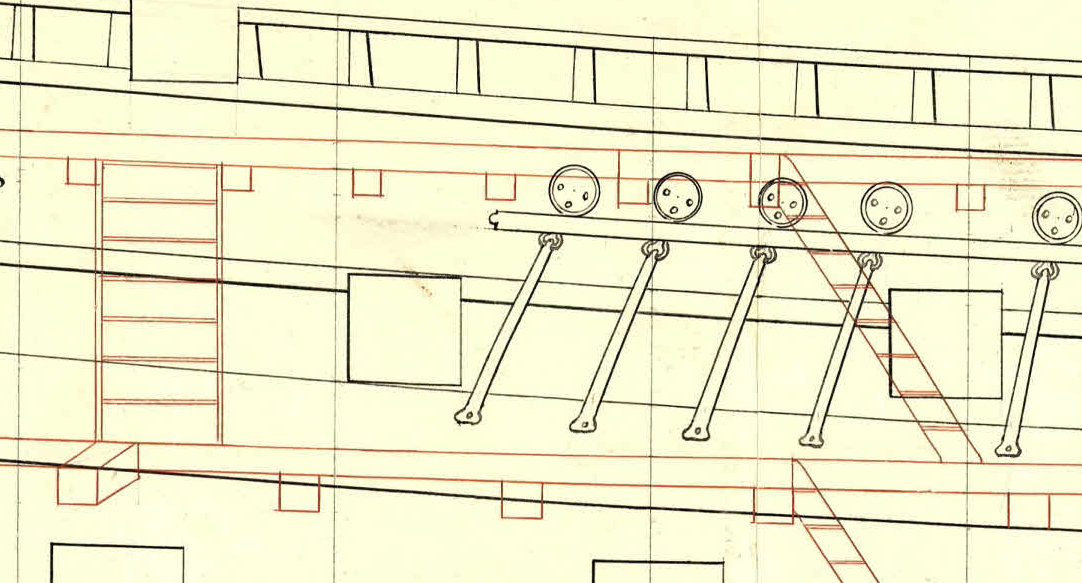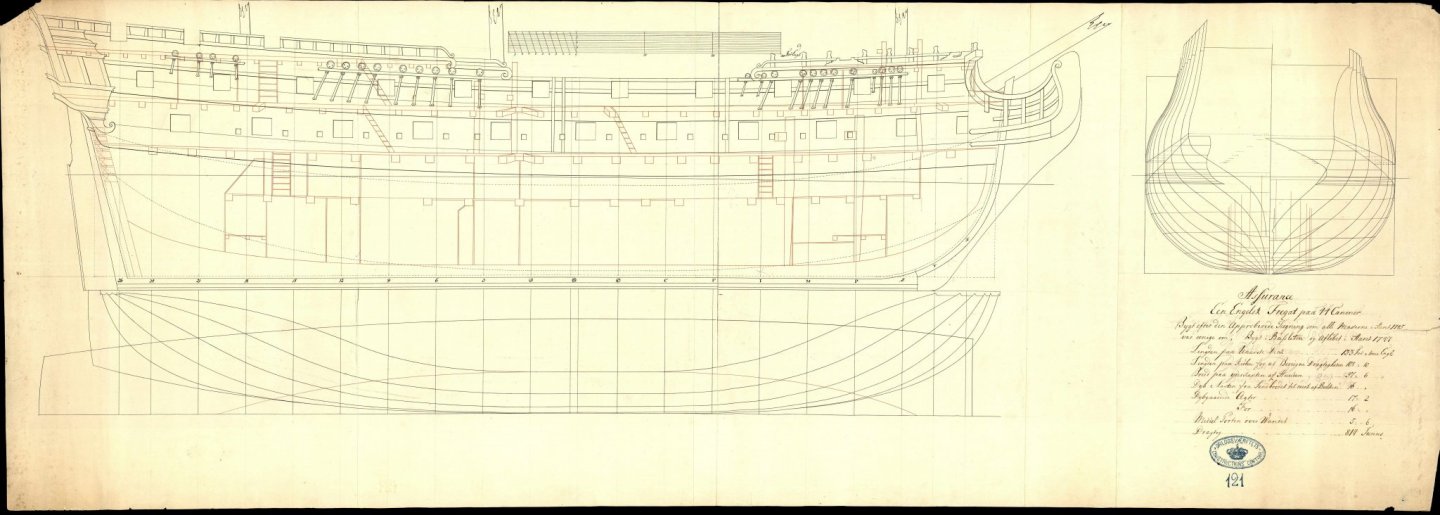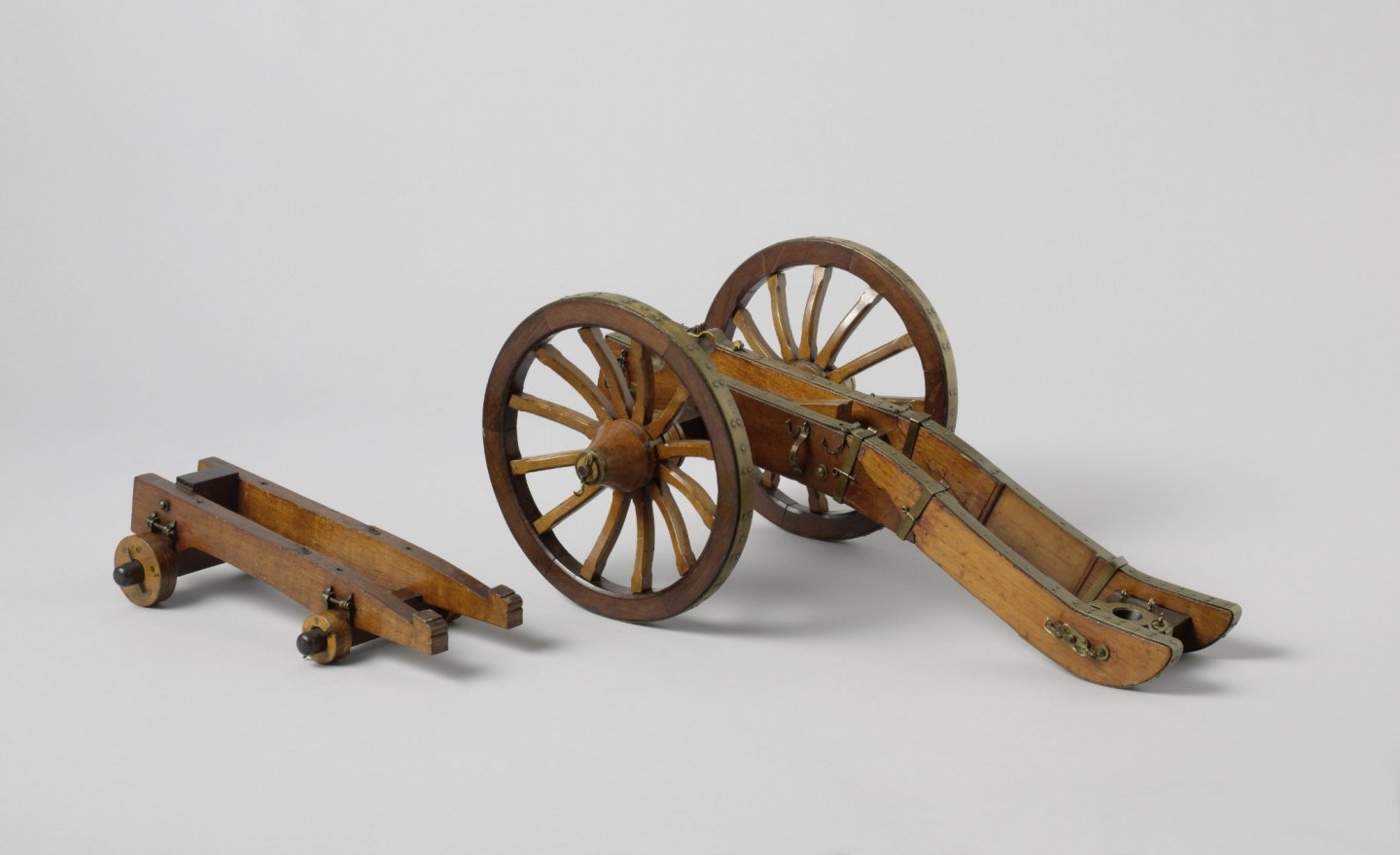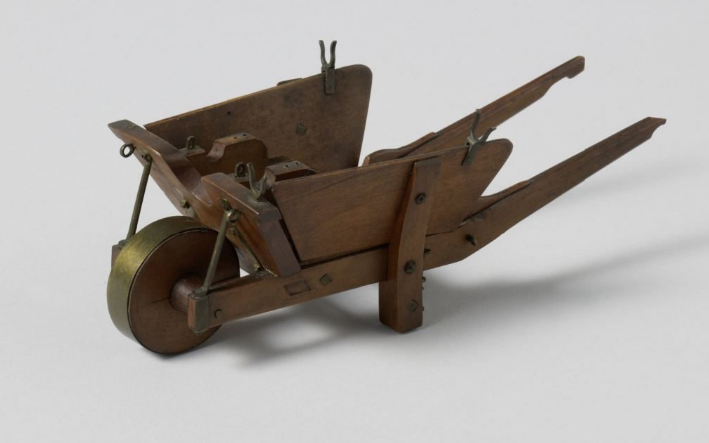-
Posts
3,020 -
Joined
-
Last visited
Content Type
Profiles
Forums
Gallery
Events
Everything posted by bruce d
-
From The Automobile Magazine 1899-11: Vol 1 Iss 2: No wonder the British feared a French invasion.
-

Ships of the early 17th century: pictures
bruce d replied to Mark P's topic in Nautical/Naval History
Really?! I dismissed that idea, will look again. Thanks -

Ships of the early 17th century: pictures
bruce d replied to Mark P's topic in Nautical/Naval History
Allan, I wish I knew. When I posted it I was hoping someone would know. Trying to figure it out, I got no further than noting that all of the squared-off areas are below-decks which indicates that they are possibly structural. One potential clue is around the capstans: the squares appear to be continuous and behind the forward capstans, indicating they represent something on the outside structure (furthest away from us in our point of view) and are drawn over the lower aft capstan, indicating it is nearer than the capstan. Also, they overlap the gunports and other features. I am sure someone knows, let's hope they are reading this! BTW, have you noticed some of the notes within the plan are upside down? As I am writing, it occurs to me that someone with the detailed history of the ship could comment on previous damage, perhaps indicating areas of major repairs? -

Ships of the early 17th century: pictures
bruce d replied to Mark P's topic in Nautical/Naval History
Hello Mark, A little past your date range, but this is such a nicely detailed plan I thought it worth posting: Here is the direct link to the Dansk page, it is A681, HMS Cornwall, a third rate of 1692: https://ao.sa.dk/ao/data.ashx?bid=39521481 HTH Bruce -

NAIAD 1797 by Bitao - 1:60
bruce d replied to Bitao's topic in - Build logs for subjects built 1751 - 1800
Your work is immaculate. 👍 -
Hello John, welcome to MSW. Nice work, hope to see more!
-

New member from the North Atlantic
bruce d replied to Thukydides's topic in New member Introductions
Hello Thukydides, welcome to MSW from the UK. Looking forward to seeing your version of ALERT ✔️ Regards, Bruce -

Ladder steps
bruce d replied to allanyed's topic in Discussion for a Ship's Deck Furniture, Guns, boats and other Fittings
Here is the detail from the Assurance drawing that I thought might be most helpful: In it, the two ladders in close proximity connecting the same two decks have different numbers of rungs. I believe you have a free hand. -

Ladder steps
bruce d replied to allanyed's topic in Discussion for a Ship's Deck Furniture, Guns, boats and other Fittings
Hello Alan, HMS Assurance, 1747. G5896 in Dansk Museum. Very precise drawings of stairs/steps, perhaps good enough to take a scale reading? Here is the link to allow you to get better resolution: - "https://ao.sa.dk/ao/data.ashx?bid=31918097" -
Perhaps I am about to learn something new. You see, I understood that a maxim of wheelmaking, wherever in the world you looked, was the principle of the 'upright' or 'bottom' spoke. The spoke at dead bottom was always meant to be at 90 degrees to the ground when measured from any direction: therein lies the strength of the wheel under load. The 'dish' of the wheel, i.e. the amount of concavity on the outside face, was exactly related to the fixed cant of the axle to maintain this angle. This spoke was thought of as the pillar on which the load rested at any time. Wheelwrights (at least the British, American and French sources I have read) were extremely picky about the wood used for spokes, demanding the straightest grain. After initial shaping if a spoke blank had the slightest imperfection such as a tiny knot or change of colour on the 'sap face' (the back of the spoke which is the convex side of the wheel) it was rejected ('used for ladder rungs' was the dismissive phrase) because of the stresses. Right or wrong, the wheelwrights I have read about all considered straight, correctly profiled spokes to be the only way. Flex within the dished wheel was primarily side-to-side as the horse(s) moved, the jolts from passing over rough surfaces was not what broke/wore out wooden wheels. I could go on, but it really would be interesting to see applications where curved spokes were used if anyone has examples? Remembering where we are, I will think of a way to make it fit in with building model ships later 🤐 .
-
I am sure you are right. About the wheels, I am not so sure. The angle of the axle, which must match the dish of the wheel, provided all the suspension according to the wheelwrights. The rule was that the bottom spoke was to be perpindicular to the ground in all directions. Of course, if the local rules in Denmark were different, or if the curve served a purpose, I would be interested to know.
-
Just for the novelty value, here is another 'not-typical' carriage from the same source. After staring a while, I think I understand how the components interchange as described in the text. Note the dish of the wheels is achieved with curved spokes instead of the usual method of mounting the spokes at an angle in the hub: does anybody know if there is a reason for this? Object data wood and brass height 24.4 cm × width 52 cm × depth 35.2 cm Provenance ...; transferred from the Ministerie van Marine (Department of the Navy), The Hague, to the museum, 1883 Object number: NG-MC-780 Copyright: Public domain Entry Item description: Model of a multipurpose carriage for a 4-pounder gun. The barrel is missing, and so is some additional equipment. Assembled in one way as a field carriage, it can be rearranged in another way as a ship carriage. The main body consists of two cheeks connected by a long stool bed and forward by the transom. The quoin has a toothed rail underneath and is moved forward and backward mechanically by means of a worm screw with a crank; it slides in a groove in the bed, from which it cannot be lifted. When used as a field carriage, it moves on two large wheels, which have an axletree going straight through the cheeks. The cheeks are prolonged at the rear with a trail which has a pintle hole and is attached to the forward cheeks with braces. To convert the carriage to a sea carriage, the aft portion of the cheeks, the wheels and the axle are removed, and the remaining body is set on a lower four-wheeled carriage. This carriage consists of two low cheeks, connected by a vertical transom and the axletrees, which are attached to the cheeks with removable braces. The wooden trucks are double and the fore trucks are larger than the hind trucks. Although this type of carriage is recorded in literature,1 its origin is unclear. Jochem Pietersz Asmus (1755-1837) claimed it as his own invention,2 which De Scheel seems to contradict.3 Scale (according to Obreen)4 1:6. Literature: M. de Scheel, Mémoires d’artillerie contenant l’artillerie nouvelle, ou les changements faits dans l’artillerie françoise en 1765 avec l’exposé et l’analyse des objections que ont été faites contre ces changemens, Paris 1795 (2nd ed.), pl. X; J.M. Obreen, Catalogus der verzameling modellen van het Departement van Marine, The Hague 1858, no. 780; H. van Goens, Handleiding tot de kennis van de zee-artillerie, Rotterdam 1861-65, p. 636, pl. XXVIII'
-
It looks like you are right 👍 according to some very good researchers. See this link for a summary: https://snr.org.uk/snr-forum/topic/hms-victory-figureheads/ Although I can't add anything to ther investigations it now looks like the image I posted represents the first figurehead, not the Trafalgar veteran. It would be useful if the 1891 publisher had given his source, then we could know if the image is a copy of a copy of a ....
-
It just keeps getting better. That is beautiful.
- 185 replies
-
- queen anne barge
- Syren Ship Model Company
-
(and 1 more)
Tagged with:
-
News flash: the Chinese invented the wheelbarrow as an aide to supplying troops in battle. Yup, I found this ... https://thegardenstrust.blog/2015/02/28/the-wheelbarrow-a-weapon-of-war/ ... which, after describing the events and players behind the original single-wheel cart with trailing handles invented to get supplies delivered over difficult ground, goes on to say ... "Later Chinese military strategists used wheelbarrows as a rapidly assembled and highly manoeuvrable ‘mobile fort’, deploying them around in a circle as a barricade. They were also developed into attack vehicles, with weaponry mounted on them." Here is a picture of a Ming Dynasty wheelbarrow-weapon-thingie - Yet another 'oh good grief' discovery.
-
It has devices to check recoil, see last para of the museum description. I am guessing, but the issue of wear on a deck would not arise unless it was in use frequently, but might be acceptable if only used when attacked. Having said that, I believe Dutch gun carriage wheels (or was it Swedish?) were shod with iron in some cases. All guesswork on my part! I just cant see it as a practical device with that kind of heavy load except on a solid, firm surface such as a deck. It just wouldn't help anyone in a land battle to depend on a wheelbarrow to cross bare earth. On shore perhaps, but not for a travelling band of soldiers.
-
A wheelbarrow as a gun carriage: well, why not? What is also interesting is that the model was in a naval archive before transferring to the modern Rijksmuseum. Perhaps a practical way of quickly shifting the position of a gun on deck, it is certainly not suited to a ploughed field. “Model of a Wheelbarrow Gun Carriage Netherlands, Netherlands, 1793 Object data wood and brass height 7.6 cm × width 19.7 cm × depth 8.5 cm × height 10 cm width 25.5 cm × depth 16 cm Provenance ...; transferred from the Ministerie van Marine (Department of the Navy), The Hague, to the museum, 1883 Object number: NG-MC-745 Copyright: Public domain Entry Model of a wheelbarrow with one wheel. In the cart, the cheeks of a gun carriage are mounted, and the fore end is hollowed out to the shape of a gun barrel. On the sides forked posts for the loading gear are indicated. The wheel is shod with brass. The feet have telescoping pins underneath to check the recoil. This invention is one of many by Jan Hendrik van Kinsbergen (1735-1819). Scale unknown.” https://www.rijksmuseum.nl/en/collection/NG-MC-745/catalogue-entry
-
Steven, you do pick interesting subjects! 👍 Great start, hope you don't mind if I look over your shoulder?
-

NAIAD 1797 by Bitao - 1:60
bruce d replied to Bitao's topic in - Build logs for subjects built 1751 - 1800
Well done, I am very glad to see this. It looks great.
About us
Modelshipworld - Advancing Ship Modeling through Research
SSL Secured
Your security is important for us so this Website is SSL-Secured
NRG Mailing Address
Nautical Research Guild
237 South Lincoln Street
Westmont IL, 60559-1917
Model Ship World ® and the MSW logo are Registered Trademarks, and belong to the Nautical Research Guild (United States Patent and Trademark Office: No. 6,929,264 & No. 6,929,274, registered Dec. 20, 2022)
Helpful Links
About the NRG
If you enjoy building ship models that are historically accurate as well as beautiful, then The Nautical Research Guild (NRG) is just right for you.
The Guild is a non-profit educational organization whose mission is to “Advance Ship Modeling Through Research”. We provide support to our members in their efforts to raise the quality of their model ships.
The Nautical Research Guild has published our world-renowned quarterly magazine, The Nautical Research Journal, since 1955. The pages of the Journal are full of articles by accomplished ship modelers who show you how they create those exquisite details on their models, and by maritime historians who show you the correct details to build. The Journal is available in both print and digital editions. Go to the NRG web site (www.thenrg.org) to download a complimentary digital copy of the Journal. The NRG also publishes plan sets, books and compilations of back issues of the Journal and the former Ships in Scale and Model Ship Builder magazines.







